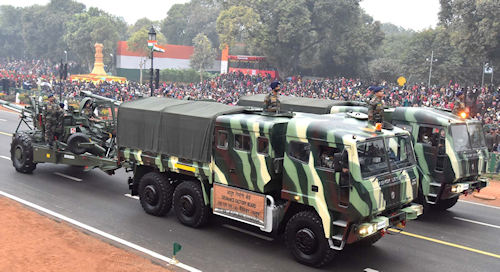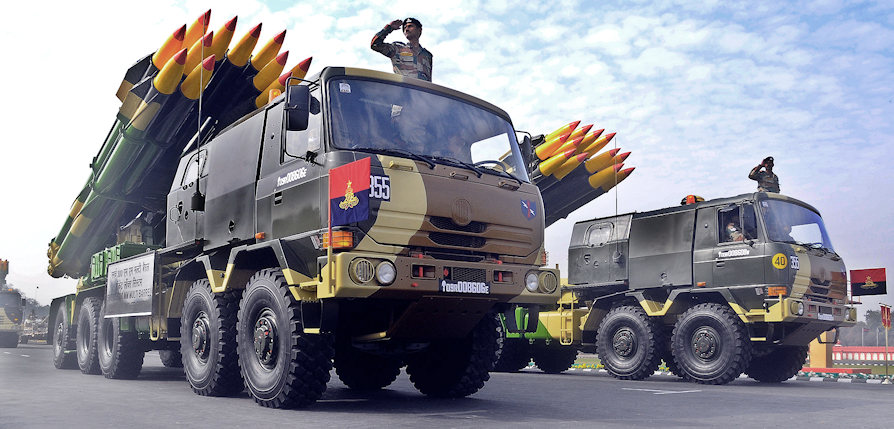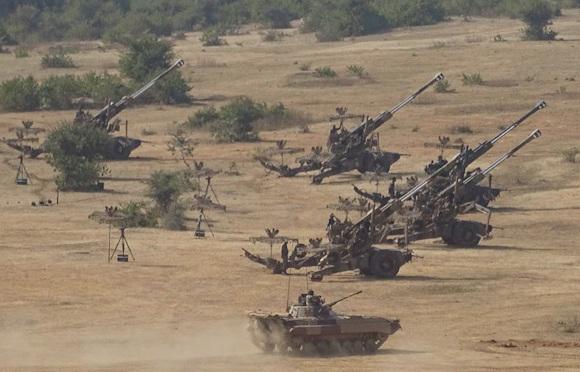The operational experience of Indian artillery in Kashmir meant that the New Delhi Army modernized its systems at the beginning of the XNUMXst century.
The war in Ukraine is demonstrating how modern single-tube and multi-tube artillery systems constitute fundamental assets for a modern army capable of dealing with high-intensity conflicts. Emerging nations such as India, destined to have a leading role in the new world order, which will take shape within a few years, will have to be equipped with increasingly sophisticated artillery and missile systems.
In 1988 the Indian Army purchased 410 units of the 77/155 mm FH-39B cannon / howitzer (opening photo) from Swedish Bofors and intended to build others under license. However, in the late 80s, rumors that Bofors had paid $ 50 million in bribes to Indian politicians to cancel the licensed howitzers program led to a ban on the Swedish factory and its products.
This caused considerable difficulties in finding spare parts for the FH-77Bs. this problem was solved only in 1999, when the Indian Parliamentary Defense Committee decided to put an end to the ban on Bofors.
But it was clear that the Indian industry should be able to produce its own artillery pieces independently, in order to free itself from any kind of external control.
Currently, the fleet of Indian towed artillery pieces is made up of domestically-made, Western and former Soviet howitzers.
 In 2019 the Army began receiving howitzers / cannon Dhanush 155/45 mm (photo), produced by OFB (the total order is 114 pieces). The weapon has a maximum range, with conventional projectile, equal to 38 km, weighing about 13 t, has, in addition to a ballistic computer, an automatic aiming and positioning system (it uses a satellite / inertial navigation system). It is also equipped with a direct day / night targeting system and various communication systems.
In 2019 the Army began receiving howitzers / cannon Dhanush 155/45 mm (photo), produced by OFB (the total order is 114 pieces). The weapon has a maximum range, with conventional projectile, equal to 38 km, weighing about 13 t, has, in addition to a ballistic computer, an automatic aiming and positioning system (it uses a satellite / inertial navigation system). It is also equipped with a direct day / night targeting system and various communication systems.
Previously, a new program was started to replace the older 155mm parts called ATAGS (Advanced Towed Artillery Gun System). The new 155/52 mm howitzer / gun was publicly unveiled for the first time at 68 ͣ Parade for the Republic Day, on January 26, 2017. In shooting tests he reached a distance of over 48 km using HE-BB (High Explosive-Base Bleed) ammunition.
Although India has invested heavily in domestic industry, in November 2016 it acquired the American 4.000/777 mm M-155 light howitzers (weight is approximately 39 kg) (145 specimens), complete with M-982 ammunition. Excalibur (with a maximum range of 70 km).
The 46 mm M-130 howitzers, acquired from the former Soviet Union, were modified by the Israeli Soltam in 2008, increasing the caliber to 155 mm. Subsequently, in 2018, the Ordnance Factory Board (OFB) has initiated an upgrade program of 300 46/130 mm M-52s to 155/45 mm caliber.
 The main self-propelled artillery of the Indian Army is the K-9 Vajra T (photo), derived from Thunder South Korean, 100 copies were ordered, of which 90 were licensed. The Indian K-9 is equipped with a 155/52 mm piece and APU (South African derivation) has been installed which allows the vehicle to fire without running the main engine, thus reducing fuel consumption.
The main self-propelled artillery of the Indian Army is the K-9 Vajra T (photo), derived from Thunder South Korean, 100 copies were ordered, of which 90 were licensed. The Indian K-9 is equipped with a 155/52 mm piece and APU (South African derivation) has been installed which allows the vehicle to fire without running the main engine, thus reducing fuel consumption.
As for the multi-tube artillery, however, the Army of New Dehli can deploy, in addition to the 21 mm BM-122s, a nationally produced field rocket launcher system: the Pinaka. This system can be equipped with 214 mm rockets, the MKII version is credited with a maximum range of 75 km. They are also capable of deploying heavy BM-30 rocket launchers Smerch from 300 mm (photo below), with a maximum range of 90 km.
In a future article we will talk about the theater missile systems supplied to India.

Photo: MoD Russian Federation / Government of India / Sigma147 / Hemant.rawat1234












